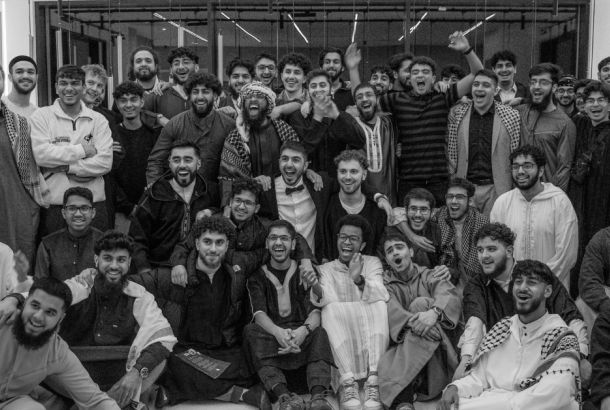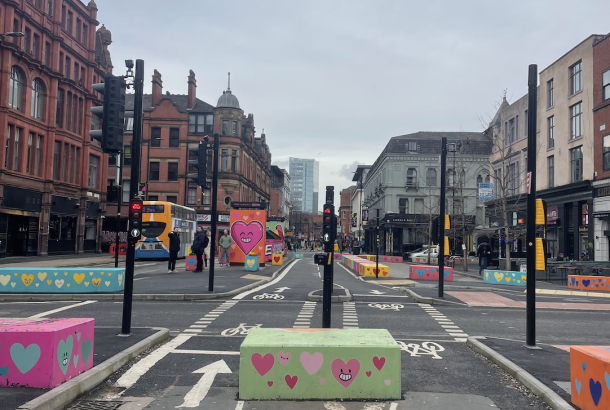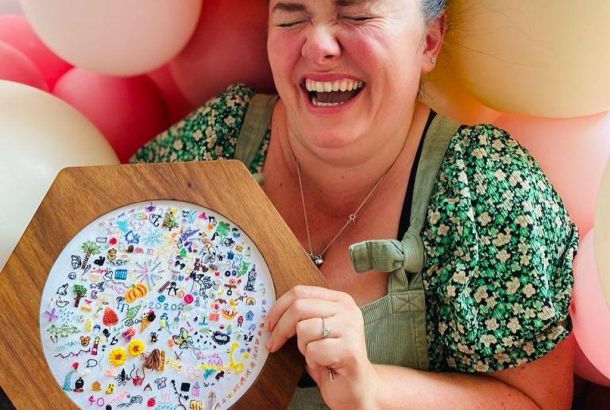Still Parents: Breaking the taboo around miscarriage

Still Parents is an award-winning exhibition by Lucy Turner. It deals with the issue of child loss through miscarriage, stillbirth, and neonatal death. One in four women have experienced miscarriage and there are an estimated 250,000 losses every year. Turner was inspired to undertake the project after her own experience of losing her daughter in 2016, and was moved to make a creative space in which to help other women and raise awareness, given the lack of available support of this kind. ‘Still Parents’ is the first exhibition of its kind.
The exhibition is partnered with the Stillbirth and Neo-Natal Death Charity (Sands). They work to raise awareness and improve medical care through research and collaboration with governmental organisations. Sands also works with the NHS St Mary’s Hospital bereavement counselling service. According to Turner, the counselling service has suggested that women visit the Still Parents exhibition to “de-counsel” and “come down” after a counselling session.
The topic of miscarriage is expressed through art as an avenue to represent the different experiences of baby loss. It allows the viewer to interpret the exhibition as is personally suited to them. The exhibition’s collection is a combination of artists’ and participants’ work.
In addition to combining works, Still Parents runs creative workshops to help with the bereavement process and provide a community of support and open dialogue. One session, for example, involved drawing photographs of the baby, a scan or simply an associated image, such as a pair of shoes.
Turner described this as “they’re making things for their baby, they’re making things about their baby.” One participant detailed their experience, stating “we laugh, we cry, we come together, and make art.”
When visiting the exhibition, there is a palpable sense of importance – as well as respect, care, and beauty – in how the topic is presented. This is especially shown through the Memory Wall which displays almost 300 names. In turn, the exhibition opens a dialogue about women’s reproductive health and rights. Discussions around miscarriage have been insufficient and resources to deal with the issue lacking. The NHS Women’s Health Ambassador, Professor Dame Lesley Regan, admitted that miscarriage “remains a taboo subject, rarely discussed due to embarrassment, distress, and even shame.”
Miscarriage is under-researched and underfunded. In the 2022 Women’s Health Strategy for England Policy Paper, a survey on the Education and training for health and care professionals showed that miscarriage was one of the four areas that respondents felt particularly required better education on its condition and treatment options, along with infertility, the menopause, and Hormone Replacement Therapy (HRT).
There is a significant lack of research around the causes of miscarriage – in general terms, we know that chromosomal issues, infections and blood clotting, for example, can contribute to miscarriage. However, on an individual level, it is very difficult to identify the specific factor actually responsible. Given that several of these can be remedied, such as through taking hormone supplements or lifestyle changes, this failure to identify has led to greater losses than may be the case. In response, Professor Quenby of University Hospital Coventry suggested a system of profiling, whereby the woman’s medical background is recorded in detail, in order to match her with the appropriate help where she may be at risk of miscarriage. However, such a system is still yet to be implemented.
Societal and cultural conditions significantly determine the experience of miscarriage, in particular the laws and practices of the given country. In countries where abortion is banned, such as El Salvador, miscarriages have led to criminal investigations and prosecution claims under the guise that the mother has in fact had an abortion. One woman who, after seeking medical help at a hospital following her miscarriage, was sentenced to 30 years for homicide.
Similarly, in the US, investigations have occurred following miscarriages that occurred as a result of accidents or substance use. For example, a Native American woman was charged with manslaughter after miscarrying. This was one of 1200 cases recorded over the last 15 years in the US, as reported by The National Advocates for Pregnant Women (NAPW), an organisation providing free legal help on matters of pregnancy.
With the banning of abortions in several US states since the overturning of Roe vs Wade earlier this year, will this number increase given the added grounds for prosecution?
A large proportion of cases in the NAPW study findings involved women of colour. Similarly, the prevalence of race can be seen in the UK and elsewhere. A BBC documentary, Miscarriage: The Search for Answers, reported that black women were being dismissed after expressing concerns about their pregnancy, denying them the necessary care, and consequently leading to miscarriage.
Dr Christine Ekechi, Spokesperson for Racial Equality Royal College of Obstetricians and Gynaecologists, expressed how “black women never feel heard in this space.” Such may be considered with the results of a study by The Lancet, analysing 4.6 million pregnancies in seven countries, finding that miscarriage is 43% higher in black women than white. Although there is a clear association between being black and higher miscarriage rates, it must be noted that they may not necessarily be causal. However, the substantial evidence supporting the prevalence of institutional racism in medical care indicates that this is a contributor.
The economic resources available in a country are decisive in the handling of miscarriage. For example, the World Health Organization reported that 84% of stillbirths occur in low and lower-middle-income countries, and that, if low-income counties were to have a 10% increase in the care provided by midwives, their stillbirth rates could reduce by a quarter.
In the UK, the level of care and financial capacity is undoubtedly very good in comparison to much of the world. Yet the question still remains whether this is enough? The Lancet reported that miscarriage costs the NHS at least £471 million each year. However, this only accounts for the short-term, immediate effects. Alternatively, a University of Birmingham article suggested that the figure was closer to £1 billion annually, when factoring in the long-term effects such as mental health complications of PTSD. Given the shortcomings in the medical system outlined in this article, it is clear that there is much improvement to be done. In order to tackle this, the NHS announced a £127 million funding boost on maternity care in 2022 to tackle some of these areas. The impact of this revitalization is to be proven through evidence of changes in the upcoming time.
Still Parents is on until December 22 2022 at Whitworth Art Gallery.







